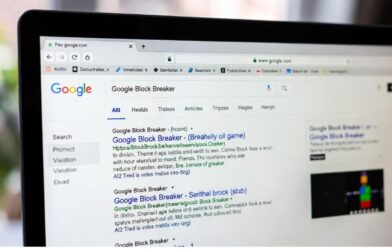Marathons are one of the ultimate tests of human endurance and stamina. To perform well and finish strong, runners must pay close attention to their fueling strategy. Among the most popular fueling options are energy gels, which provide a quick and convenient source of carbohydrates to sustain energy levels.
However, the question remains: how often should you consume energy gels during a marathon? This article will explore the key considerations and offer guidelines to help you optimize your energy gel consumption for marathon success.
Understanding Energy Gels
Before diving into the specifics of timing and frequency, it’s important to understand what energy gels are and how they work. Energy Gels are concentrated sources of carbohydrates, often containing simple sugars such as glucose, fructose, or maltodextrin.
These carbohydrates provide an immediate energy boost because they enter the bloodstream quickly. Additionally, many energy gels contain electrolytes (sodium, potassium, magnesium) to help maintain hydration and muscle function, and some may include caffeine for an extra mental and physical edge.
Why Timing and Frequency Matter
The primary goal of consuming energy gels during a marathon is to maintain steady energy levels and prevent hitting the wall, a phenomenon where glycogen stores are depleted, leading to severe fatigue and decreased performance. Proper timing and frequency of gel consumption can help sustain glycogen stores and provide a continuous supply of glucose to the muscles.
Factors to Consider
1. Individual Differences
Every runner’s body is different, and what works for one person may not work for another. Factors such as body weight, metabolic rate, fitness level, and personal tolerance to gels can all influence how often you should consume them. It’s crucial to experiment during training to determine your own needs and preferences.
2. Pacing and Effort
The intensity at which you run affects how quickly you burn through your glycogen stores. Faster paces and higher efforts require more energy, necessitating more frequent gel consumption. Conversely, slower paces might allow for less frequent intake.
3. Weather Conditions
External factors like temperature and humidity also play a role. Hot and humid conditions increase sweat loss and the rate at which you deplete glycogen, potentially requiring more frequent gel intake. Cold weather might reduce your perceived need for energy, but maintaining regular gel consumption is still important to avoid energy dips.
General Guidelines for Gel Consumption
While individual needs vary, there are some general guidelines that can help you determine how often to consume energy gels during a marathon.
1. Start Early
It’s recommended to consume your first energy gel within the first 30-45 minutes of the race. Starting early helps ensure that you maintain a steady supply of carbohydrates before your glycogen stores are significantly depleted.
2. Consume Regularly
After the initial gel, a common strategy is to consume an energy gel every 30-45 minutes. This frequency helps maintain blood glucose levels and provides a continuous supply of energy. For most runners, this translates to consuming a gel every 5-7 miles, depending on their pace.
3. Adjust Based on Distance
For shorter distances within the marathon, such as the first half, you might find that consuming a gel every 45 minutes works well. However, as you approach the latter stages of the race (miles 18-26), you might need to increase the frequency to every 30 minutes to combat fatigue and sustain energy levels.
4. Listen to Your Body
While guidelines are helpful, it’s essential to listen to your body. If you start feeling fatigued or notice a drop in energy, don’t wait for the next scheduled gel intake—consume one immediately. Conversely, if you feel overly full or experience GI distress, you might need to adjust the timing or quantity.
Hydration and Gel Consumption
Proper hydration is crucial when consuming energy gels. Gels are concentrated sources of carbohydrates and can be challenging to digest without adequate fluids. It’s recommended to consume gels with water, not sports drinks, to avoid overwhelming your stomach with too many sugars and electrolytes at once. A good rule of thumb is to drink 4-8 ounces of water with each gel.
Practicing Your Strategy
The key to a successful fueling strategy during a marathon is practice. Use your long training runs to experiment with different brands, flavors, and timings of energy gels. Keep an eye on how your body reacts and adjust as necessary. Practicing your strategy helps ensure that you know what works best for you on race day, reducing the risk of surprises or discomfort.
Potential Issues and Solutions
1. Gastrointestinal Distress
Some runners experience GI issues when consuming energy gels, especially if they are not used to them. To mitigate this, try different brands and flavors during training to find one that your stomach tolerates well. Additionally, ensure you drink enough water with each gel to aid digestion.
2. Flavor Fatigue
Consuming multiple gels over several hours can lead to flavor fatigue, where the taste becomes unappealing. To combat this, vary the flavors of the gels you carry. Some runners prefer alternating between sweet and savory options to keep their palate interested.
3. Logistical Challenges
Carrying multiple energy gels can be a logistical challenge. Use a running belt, pockets, or a hydration pack to store your gels conveniently. Practice retrieving and consuming gels during your training runs to ensure you can do so efficiently during the race.
Develop a Personalized Energy Gel Strategy for Marathons
Determining how often to consume energy gels during a marathon is a personalized process that requires careful consideration of individual factors, pacing, and environmental conditions.
Starting with a general guideline of one gel every 30-45 minutes, and adjusting based on your needs and experiences during training, can help you develop an effective fueling strategy.
Remember to practice your plan, stay hydrated, and listen to your body to ensure you cross the finish line with energy to spare. By optimizing your energy gel consumption, you can enhance your performance, avoid hitting the wall, and achieve your marathon goals.
Read More Articles: Benefits of Upgrading to a Lithium Motorcycle Battery.












